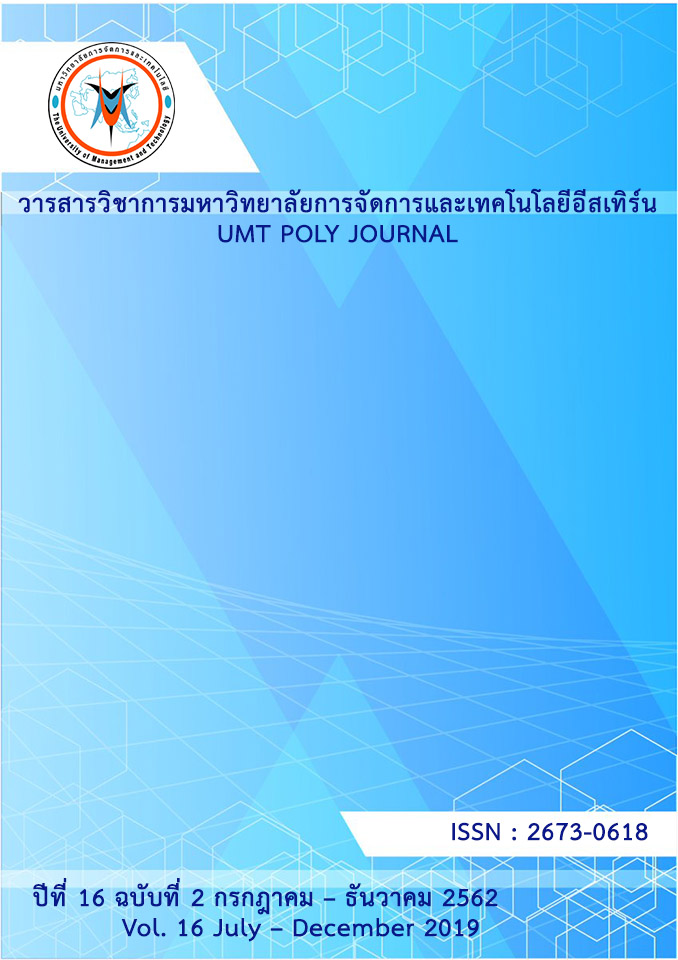RESEARCH ON THE INFLUENCE OF INTER-VISITOR INTERACTION ON POST-TRAVEL BEHAVIORAL INTENTION-----BASED ON THE MEDIATING ROLE OF TOURIST
คำสำคัญ:
Tourist interaction, Satisfaction, Post-trip behavior intention, Mediation effectบทคัดย่อ
Post-purchase behavior intentions are an important measure and judgment basis for enterprises to accurately predict customer follow-up behavior, and are increasingly valued by enterprises and their managers. Therefore, it is a subject worthy of study to explore the factors and paths that influence the customer's willingness to purchase afterwards. The article takes the tourists of the travel agency team as the research object, and introduces the intermediary variable of tourist satisfaction to explore the influence of the interaction between tourists on the intention of post-tour behavior. It is found that the interaction between tourists has a direct impact on the satisfaction of tourists and the intention of post-tour behavior. Tourists are satisfied with the mediating effect of the interaction between tourists on the influence of tourists' behavior after the game, but the mediating effect in the process of the interaction between tourists in the interaction of the post-tourism intentions shows a layered difference.
Downloads
เอกสารอ้างอิง
Cronin, Jr.J.J. & Taylor, S.A. (1992). Measuring service quality: a reexamination and extension. The journal of marketing, 55-68.
Huang, J. & Hsu, C.H. (2010). The impact of customer-to-customer interaction on cruise experience and vacation satisfaction. Journal of Travel Research, 49(1), 79-92.
Hui, T.K., Wan, D. & Ho, A. (2007). Tourists’ satisfaction, recommendation and revisiting Singapore. Tourism management, 28(4), 965-975.
Jiang, T. (2012). Qualitative exploration and theory model construct on customer-to-customer interaction. Tourism Forum, (2):6-11.
Jiang, T. & Zhang, F. (2013). Research on the Influence of Inter-Visitor Interaction on Re-purchase
Willingness—Based on the Perspective of Tourist Experience. Tourism Journal, 28(7), 90-100.
Levy, S.E. (2010). The hospitality of the host: A cross-cultural examination of managerially facilitated consumer-to-consumer interactions. International Journal of Hospitality Management, 29(2), 319-327.
Li, Z.L. (2015). Overview and Prospects of Inter-Customer Interaction Research. Foreign Economics and Management, 37(12), 73-85.
Li, J.X. (2007). Relationship and management between customers in service environment. The Probe,(6):40-41.
Mano, H. & Oliver, R.L. (1993). Assessing the dimensionality and structure of the consumption experience: evaluation, feeling, and satisfaction. Journal of Consumer research, 20(3), 451-466.
Martin, C.L. (1996). Customer-to-customer relationships:Satisfaction with other consumers ’public behavior.Journal of Consumer Affairs, 30(1), 146-169.
Martin, C.L. & Pranter, C.A. (1989). Compatibility management:Customer-to-customer relationships in service environments.Journal of Services Marketing, 3(3), 5-15.
Moore, R., Moore, M.L. & Capella, M. (2005). The impact of customer-to-customer interaction
in a high personal contact service setting.Journal of Services Marketing, 19(7), 482-491.
Nicholls, R. (2005). Interactions between Service Customers: Managing On- site Customer-to-customer Interactions for Service Advantage.Poznan:The Poznan University of Economics Publishing House, 260-273.
Petrick, J.F., Morais, D.D. & Norman, W.C. (2001). An examination of the determinants of entertainment vacationers’ intentions to revisit. Journal of Travel Research, 40(1), 41-48.
Wakefield, K.L. & Blodgett, J.G. (1994). The importance of service scapes in leisure service settings .Journal of Services Marketing, (8), 66-76.
Wu, C.H. (2008). The influence of customer-to-customer interactions and role typology on customer reaction.The Service Industries Journal, 28(10), 1501-1513.
Zeithaml, V., Berry, L.L. & Parasuraman, A. (1996). The behavioral consequences of service quality.Journal of Marketing Research, 60(2), 31-46.
ดาวน์โหลด
เผยแพร่แล้ว
ฉบับ
ประเภทบทความ
สัญญาอนุญาต
ประกาศลิขสิทธิ์
เนื้อหาและข้อมูลในบทความที่ลงตีพิมพ์ในวารสารวิชาการมหาวิทยาลัยการจัดการและเทคโนโลยีอีสเทิร์น ถือเป็นข้อคิดเห็นและความรับผิดชอบของผู้เขียนบทความโดยตรง ซึ่งกองบรรณาธิการวารสารไม่จำเป็นต้องเห็นด้วยหรือร่วมรับผิดชอบใด ๆ
บทความ ข้อมูล เนื้อหาหรือรูปภาพ ฯลฯ ที่ได้รับการตีพิมพ์ในวารสารวิชาการมหาวิทยาลัยการจัดการและเทคโนโลยีอีสเทิร์น ถือเป็นลิขสิทธิ์ของวารสารวิชาการมหาวิทยาลัยการจัดการและเทคโนโลยีอีสเทิร์น หากบุคคลหรือหน่วยงานใดต้องการนำข้อมูลทั้งหมดหรือบางส่วนไปเผยแพร่ต่อหรือเพื่อกระทำการใด ๆ จะต้องได้รับอนุญาตเป็นลายลักษณ์อักษรจากวารสารวิชาการมหาวิทยาลัยการจัดการและเทคโนโลยีอีสเทิร์นก่อนเท่านั้น




